


ChessBase offers a lot of tools to create and to update an opening repertoire. To use these tools effectively it helps to create a database with your opening repertoire: your repertoire database.
In our example we create a repertoire database for Black.
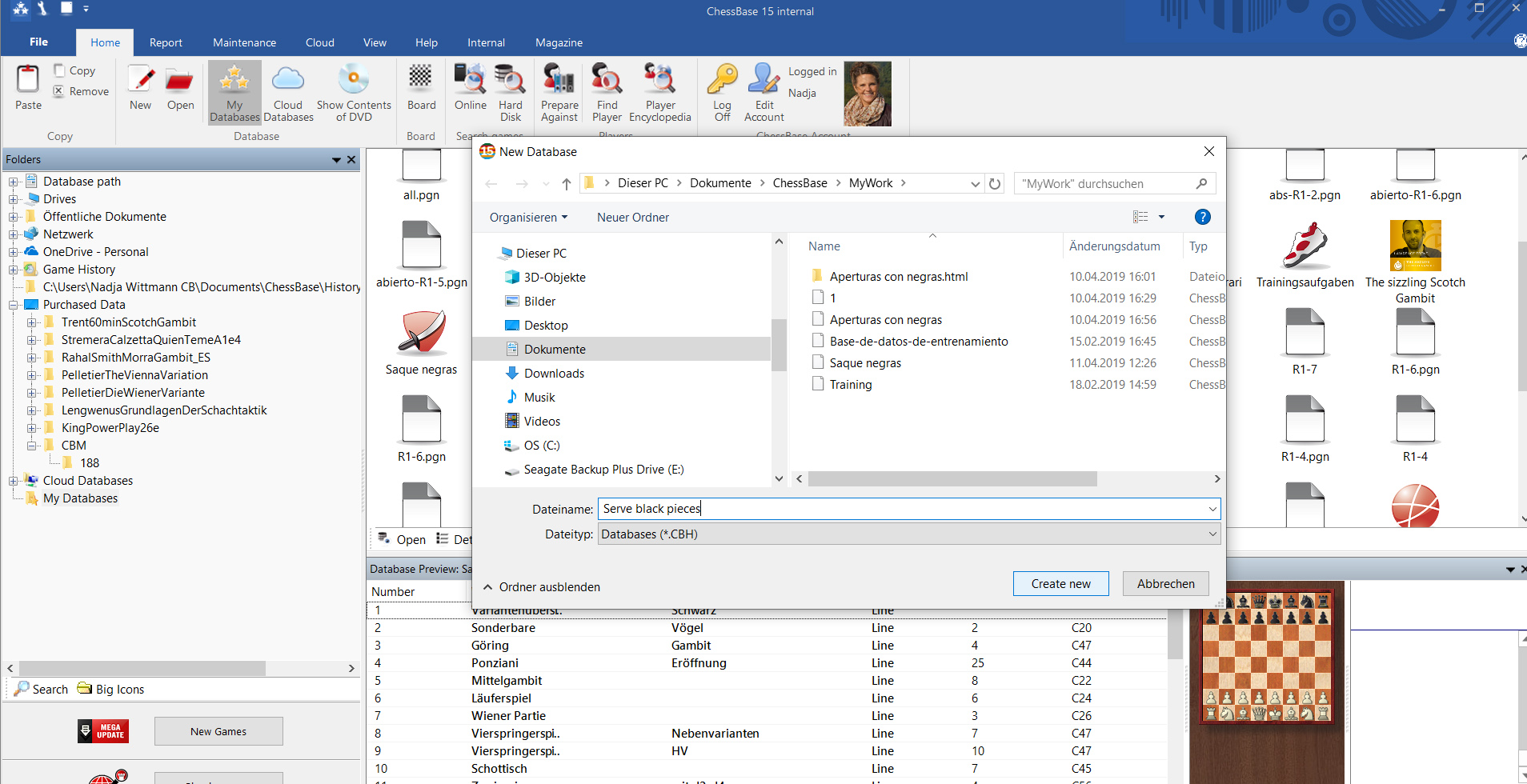
Click or tap to expand any image
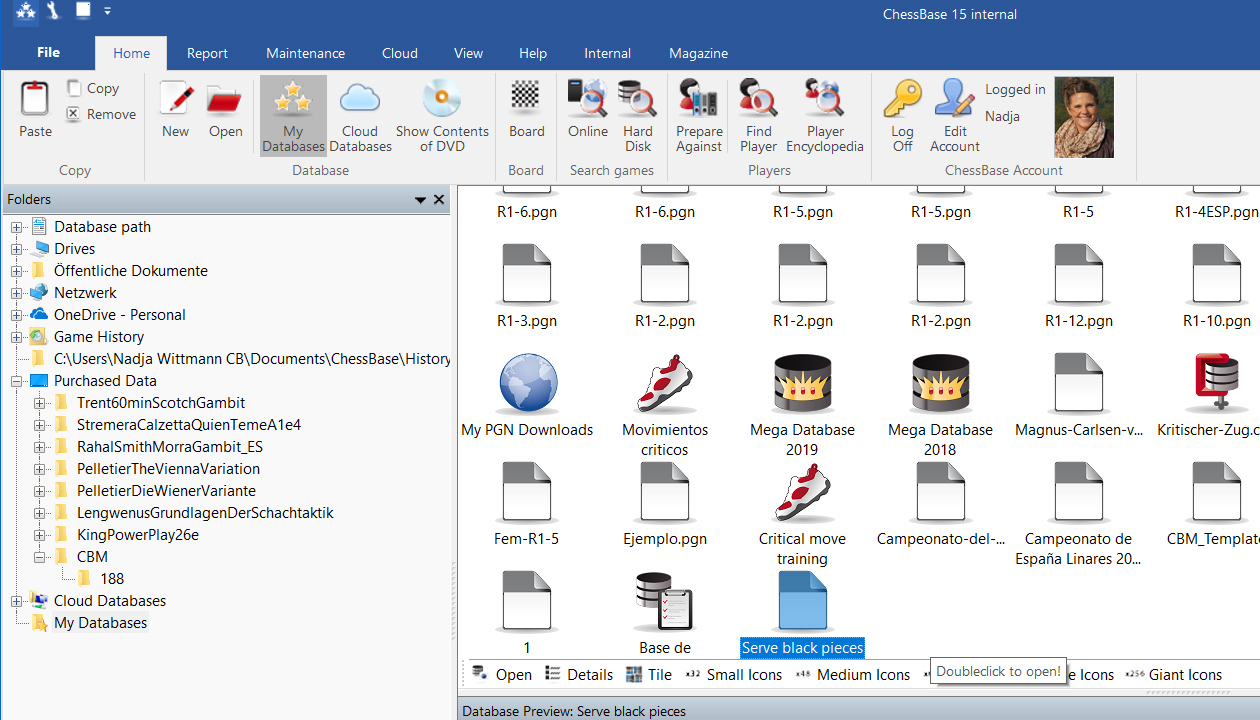
The database "Serve black pieces" appears in "My Databases"
Borrowing a term from tennis we name our repertoire database to be "Serve black pieces". It is the database in which we will save games and analyses that are part of or are important for our repertoire. Now, we define this database as repertoire database.
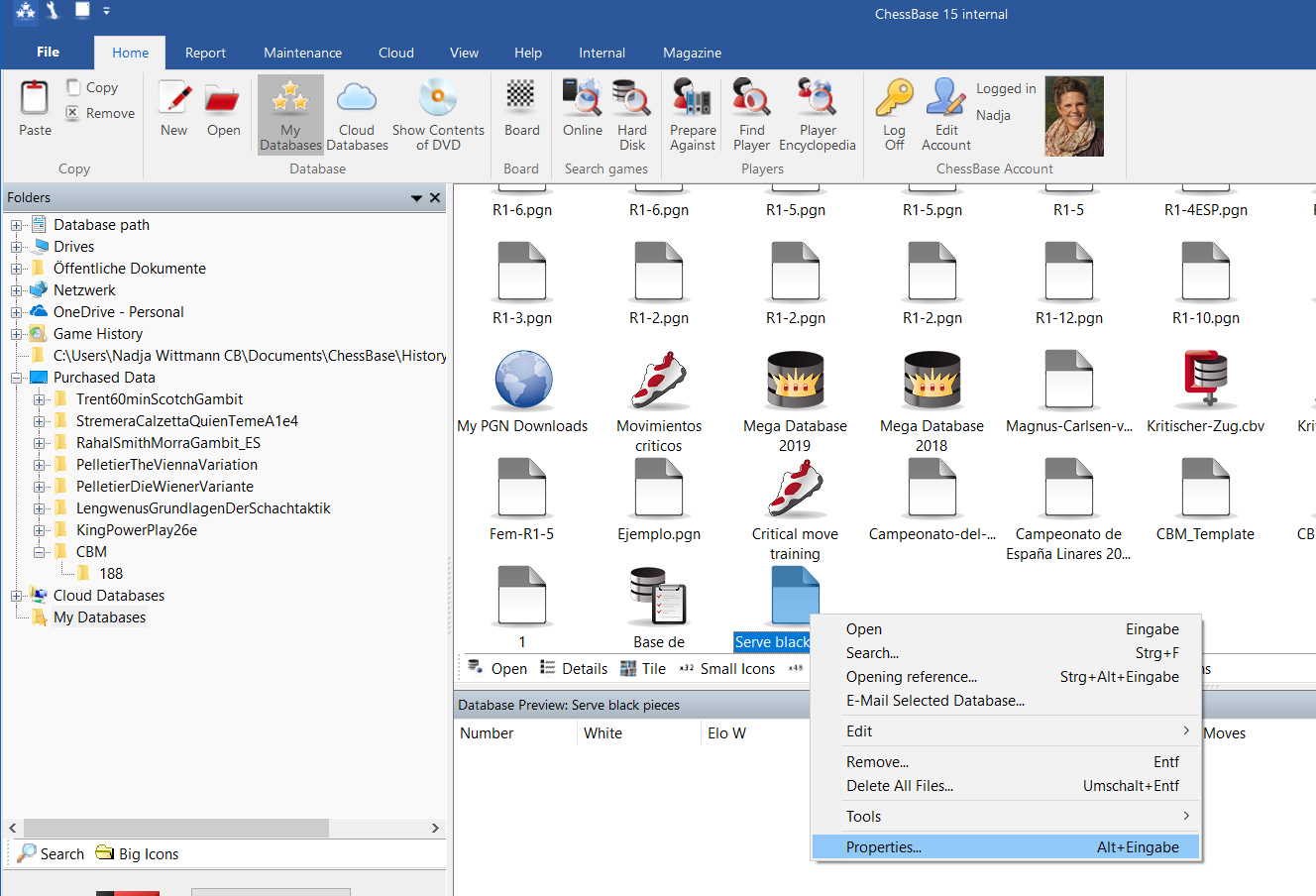
A right-click with the mouse on the database symbol "Serve black pieces" leads us to "Properties"
After marking the file (by clicking) we right-click with the mouse to call up the menu above. Then we go to "Properties". Entering the shortcut Alt+Enter leads to the same result.
The following menu appears:
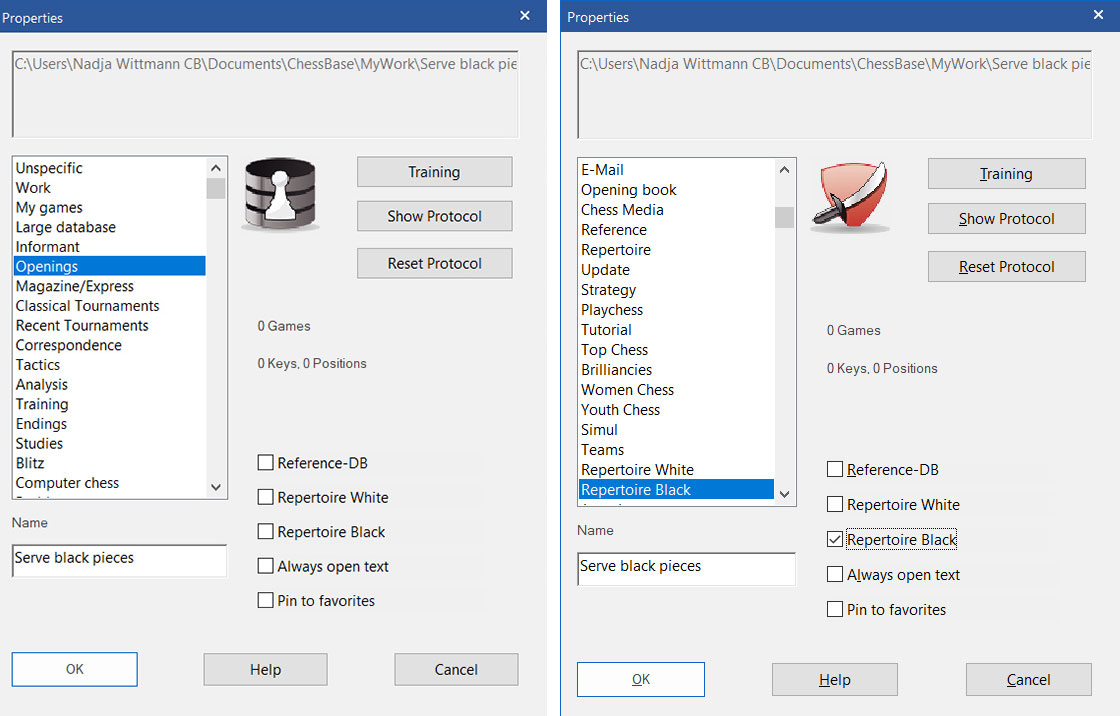
First we give the database the attribute "Openings", then we check "Repertoire Black"
Checking "Repertoire Black" defines this database as repertoire database. Here, three things are worth remembering:
Let's first take a look at the list of games in the repertoire database.
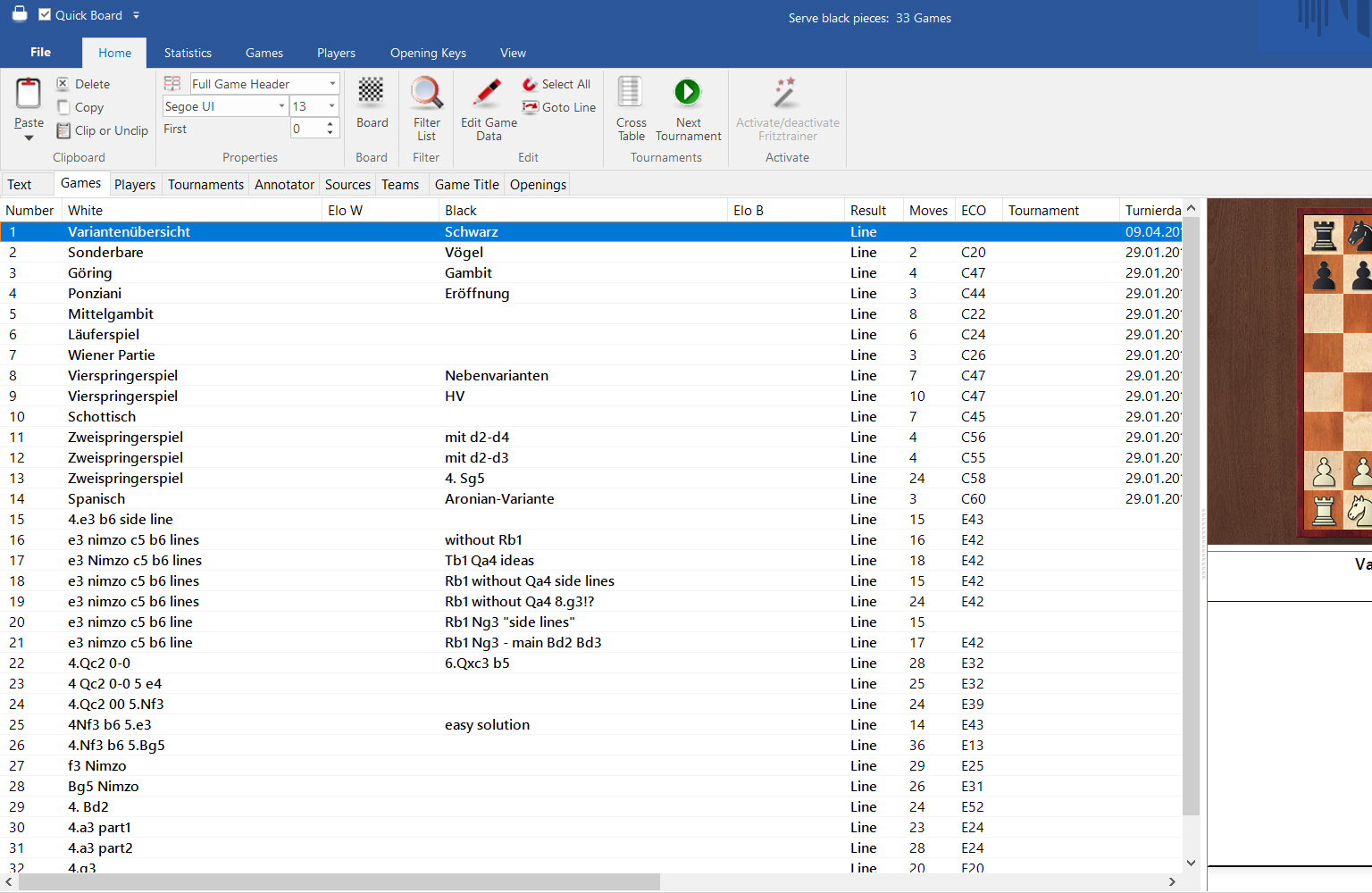
Click or tap to expand any image
This view of the repertoire database shows only a few columns (e.g. "Number", "White", "Black", etc.). However, some columns are hidden — and the user can decide which column he/she wants to hide. But these changes affect only this database. Hiding columns gives you more space for entries under "White" and "Black".
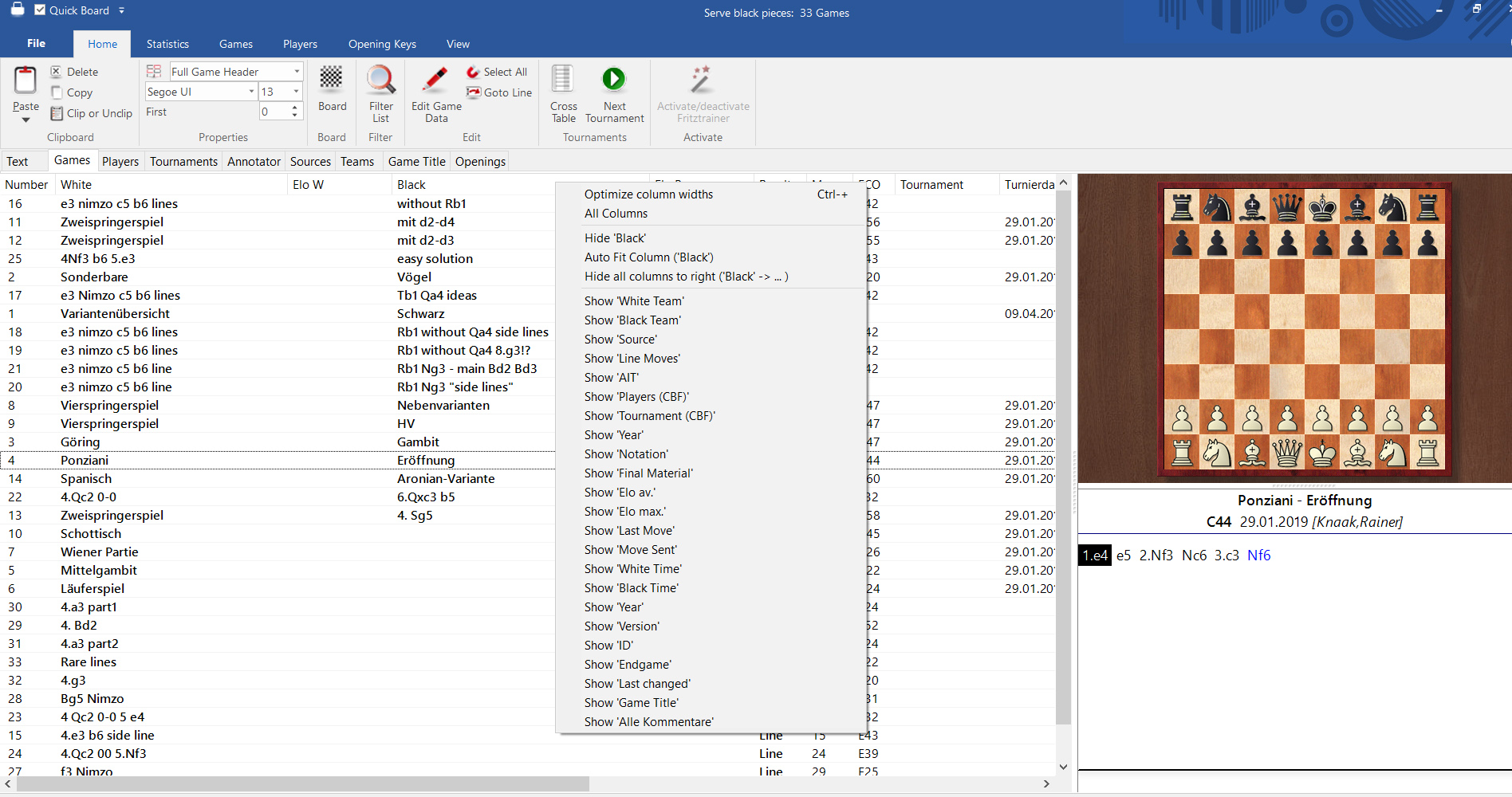
To hide columns select and right-click the column you want to hide (e.g. "White", "Black", etc.). A menu appears that allows you to hide columns. (E.g. "Hide Black" hides the column "Black"). Clicking "Show..." shows the respective column. This function helps us to navigate the database more easily because we simply do not need some information, in this case e.g. the Elo ratings.
The games list in our example shows that our repertoire database still grows. To have something against the Ponziani we import the ChessBase Magazine article that recommends a line against the Ponziani.
A look at the current state of our repertoire against the Ponziani reveals that we need to find something against it.

Therefore, we switch to the main window of ChessBase 15, go to the Ponziani article in the ChessBase Magazine and take a look at the list of games.


Now we open the first game (not the text), Broekmeulen vs. Nieto. We select "Report" and then "Add to Black Repertoire":
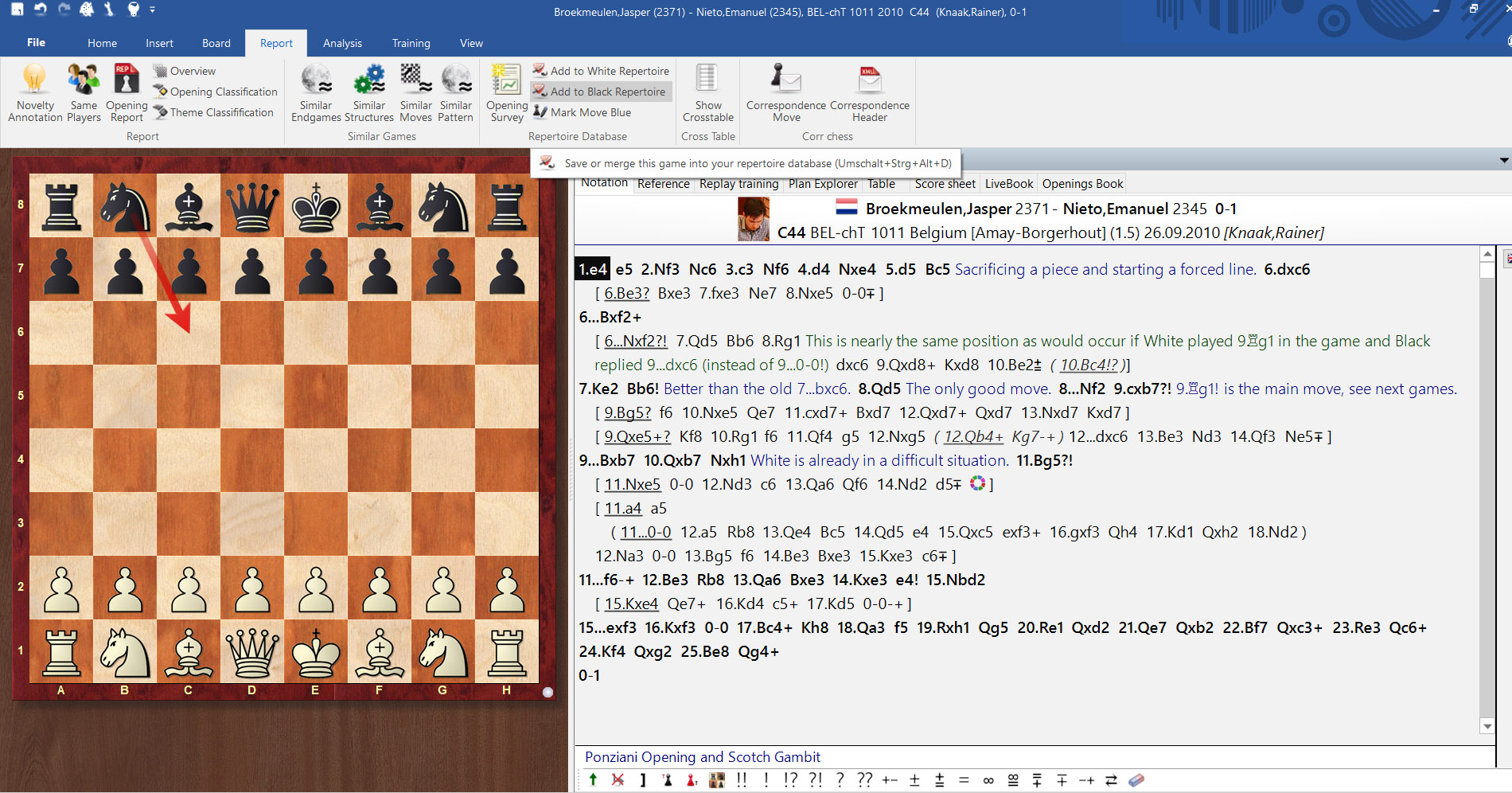
The shortcut Shift+Ctrl+Alt+D leads to the same result. The menu now asks how and to which extent you want to copy the game to your repertoire database.
You can save the game Broekmeulen vs. Nieto as a new game in your repertoire database or merge it with an existing line. In this case the game and the line are merged – and this is what we choose in our example.
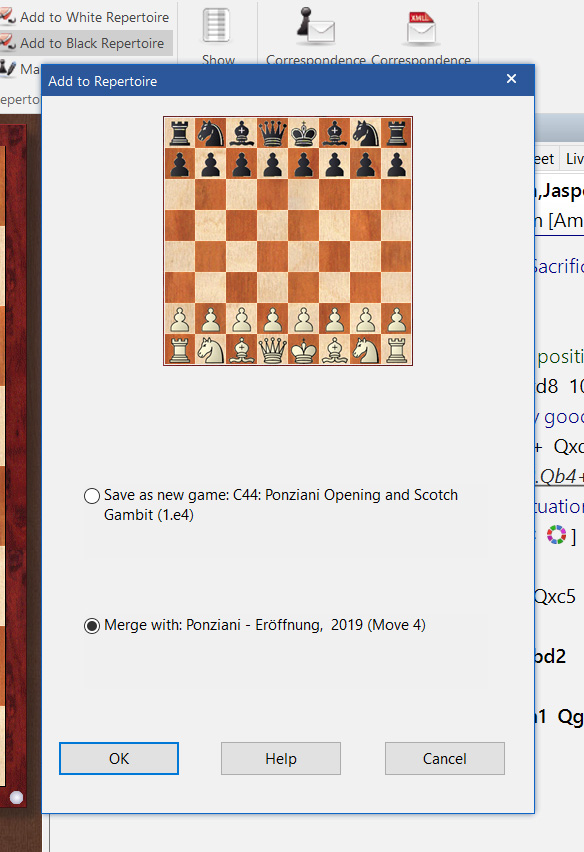
Then we open the next game and repeat the procedure. After having exported all five games into our repertoire database we can start or continue our chess work.
The picture below shows our new line against the Ponziani after importing all games into our repertoire database. The whole article is now part of our opening repertoire.

To conclude a little hint:
Of course, you can use this function to import various games into your repertoire database, e.g. games from updates or the ChessBase Magazine or the blitz games you played on the server.
Should you have questions about the material presented here, feel free to use the "feedback to the editors" link below and I will try to answer all questions related to ChessBase 15 in a forthcoming tutorial.
| Advertising |